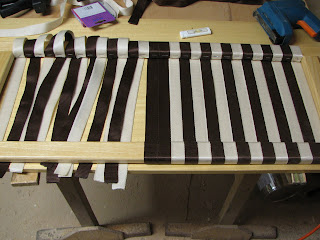





This monday, the canoe was finnaly finished, well almost, as I still have some polishing of the decks to do, but I will wait a couple more days to do that, so that the clearcoat has time to cure properly. It has been a lot of working hours since November (I stopped writing down the hours soon after the start as it demotivated me:)), so it was pretty fast and steady progress. Now I have to wait a couple of days for nice weather and then we go canoeing!!! But, I am already thinking about my next project-a wood strip sea kayak.
I sure learned a lot during the course of this canoe build, and also my father in law, who is an expert woodworker, admitted to learning a lot of new things, so it was very revarding experience for both of us. The feeling of accomplishment is amazing, and I really look forward to all the hours that will be spent on the water with the family.
And to think how it all started: I brought home a couple of sitka spruce boards:)

































